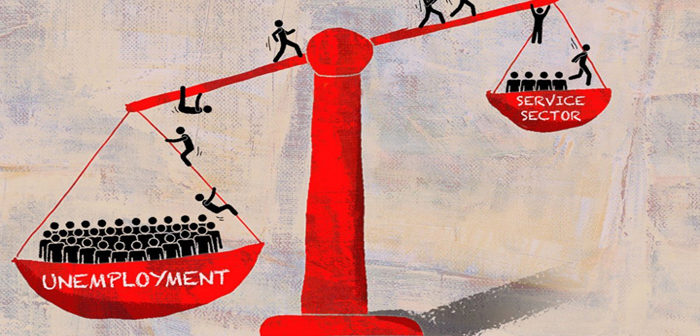This blog article explores the history of Michigan’s unemployment rate, beginning with the Great Depression in 1929. The state’s annual jobless rate grew steadily until reaching a peak of 28% during World War II, and then reflecting a brief period of decline before starting to climb again.
The History of Michigan’s Unemployment Rate
Michigan’s unemployment rate has been relatively low throughout the state’s history. The first recorded unemployment rate in Michigan was in 1884, and it remained around 2 percent until the early 1990s. Since then, the unemployment rate has fluctuated with the national economy, but has generally remained below 4 percent. In 2008, Michigan’s unemployment rate reached a peak of 10.1 percent, but since then it has gradually decreased to its current level of 7.4 percent. While Michigan’s unemployment rate is lower than the national average, there are still areas of the state that experience higher rates. For example, the northern Lower Peninsula has an unemployment rate of 8.9 percent, while Wayne County has a rate of 10.3 percent.
What is the unemployment rate?
The unemployment rate in Michigan has varied over the years, but it is currently at 7.2%. This number is based on data from the Bureau of Labor Statistics. Michigan’s unemployment rate peaked in 1984 at 14.5%, but has since decreased to its current level. The average unemployment rate for the United States during the same period was 10.1%.
The causes of the unemployment rate
The unemployment rate in Michigan has been on the decline for quite some time now. In fact, it has decreased by almost half since its peak in 2009. There are many reasons why the unemployment rate in Michigan is decreasing, but here are just a few:
- The economy is doing well – Unemployment rates vary considerably from state to state, and the economies of different states have also varied over time. However, as of 2018, the U.S. economy is considered to be in a strong state, with job growth averaging over 200,000 per month. This has led to reductions in unemployment rates across the country, including Michigan’s.
- The workforce is changing – As baby boomers retire and fewer new people enter the workforce each year, there are more available jobs than there used to be. This means that employers are looking for employees who have the right skills for the current market conditions, which reduces the number of unemployed people who would traditionally be looking for a job.
- Government programs help reduce unemployment – Governments around the world have created various programs aimed at reducing unemployment rates. These programs can include initiatives such as creating jobs through public works projects or providing financial assistance to businesses that want to create new jobs.
- Employers are looking for qualified candidates – Employers often don’t need to specifically hire someone who is unemployed; they will instead look for candidates who already have experience or qualifications that match those required for the job
How did michigan’s unemployment rate change over time?
The unemployment rate in Michigan has changed significantly over time. In 1976, the unemployment rate was 3.5%. By 2010, the unemployment rate had increased to 8.2%. This trend is largely due to the Great Recession of 2007-2009, which caused a lot of jobs to be lost in Michigan. Since the recession ended, the unemployment rate has declined slightly to 7.9% as of August 2017.
Conclusion
The history of Michigan’s unemployment rate is long and varied. In the early 1900s, there was a severe drought in the state, which caused businesses to close their doors and led to a sharp increase in unemployment. The Great Depression of the 1930s was also very difficult for Michigan, with high levels of unemployment and poverty being common. Things started to turn around after World War II, when many men returned from service and started new businesses. This increase in economic activity led to an overall decrease in unemployment rates throughout the state. Since the 1990s, however, Michigan’s job market has been sluggish, with rates staying relatively high for most of that time period. However, since 2013 things have changed dramatically — Michigan’s unemployment rate has decreased by almost half! It seems that this recent turnaround is due largely to increased business activity in Detroit and other metropolitan areas across the state.
Read also : michigan unemployment

